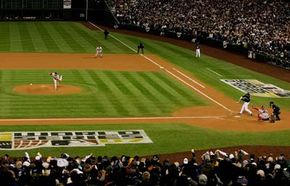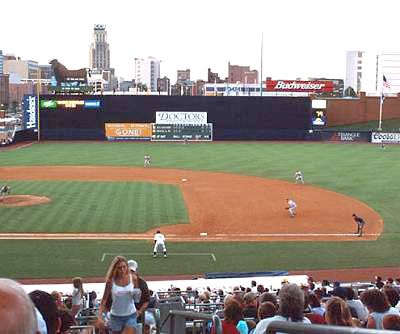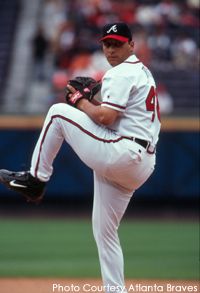Groundskeepers at baseball parks have traditionally created checkerboard, diamond and argyle patterns in the field. These patterns have become more elaborate in recent years. Baseball fans might remember the star patterns created at Coors Field in Denver to commemorate the 1998 All-Star Game. These designs are not all that complicated and can be easily duplicated on your own lawn.
The designs are created through a process called lawn striping. To create lawn-striping designs of your own, you only need two pieces of equipment: a lawnmower and a roller. Many professional groundskeepers use old-fashioned reel mowers to cut a stadium's grass. Attached just behind the blades of the mower is a lawn roller that bends the grass down. Some lawnmower manufacturers are beginning to make riding mowers with full-width rollers mounted to the rear of the mower to make this task easier.
Advertisement
Whatever pattern you make is revealed by the light shining off of the bent grass. A checkerboard design is created by passing over the grass in side-by-side rows, first going north to south, then making east-to-west stripes in the grass that intersect the north-south stripes. In this way, you alternate the way the grass bends. When you look at your lawn, the stripes of grass leaning away from you will look lighter. This lighter green is caused by the sunlight reflecting off the entire blade of grass. In the darker green stripes, formed by the blades of grass leaning toward you, the sunlight is reflecting only off the tips of the blades.
Different grasses can be used to accentuate the striping effect, including rye grass, fescue and bluegrass. You won't see such a big contrast between the stripes' colors if you have a warm-season grass, such as Bermuda or zoysia. Watering the grass after mowing can make your pattern stand out even more.
Advertisement


